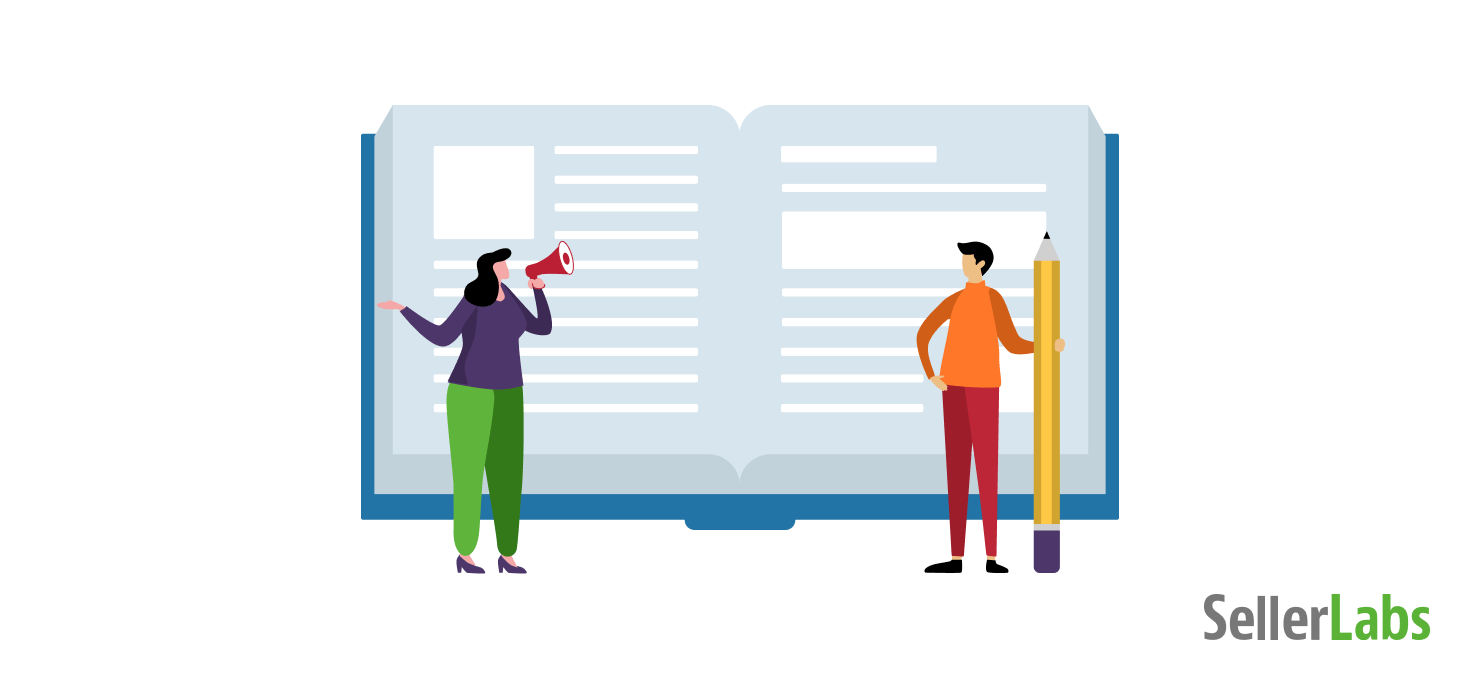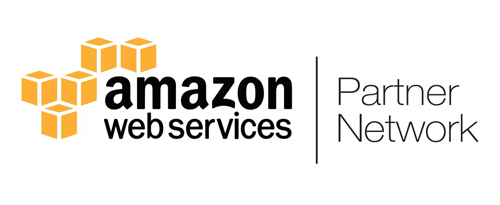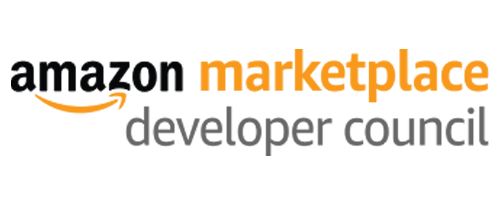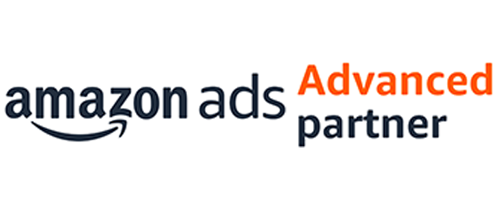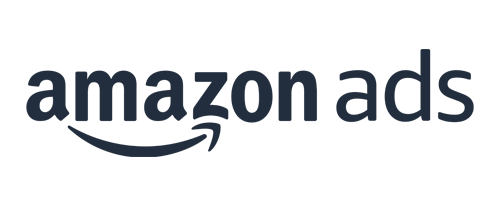A guide to educate and inform about the different Amazon advertising options available.
Chances are you know how important the Amazon advertising platform is for boosting sales. Amazon Sponsored Products ads can dramatically improve the presence of your products and increase sales. But there’s more to Amazon advertising than Sponsored Products ads. So to help you better understand the landscape, here’s an Amazon digital advertising glossary.
The Complete Amazon Digital Advertising Glossary
Ad Group
Ad groups exist within a campaign. Think of an ad group as a container or an arbitrary grouping used to divide a campaign into smaller, manageable pieces. You will need to specify a default bid at the ad group level.
Ad Spend
The total amount you paid for clicks for all of your campaigns.
Advertising Cost of Sale (ACoS)
The percent of attributed sales spent on advertising. This is calculated by dividing the total ad spend by attributed sales.
The Advertising Cost of a Sale (ACoS) is an Amazon-invented metric. ACoS is probably the most used metric sellers use to determine if an ad is successful or not. ACoS measures the sum of all your advertising costs and divides them by the number of sales an ad generated.
For example, if you spent $50 on advertising and you sold $500 worth of goods, your ACoS would be 10%. Amazon uses this metric to give sellers an advertising cost on a per-unit level. This metric gives sellers a simple way to see how much they are spending on ads in relation to a sale. ACoS takes into account conversion rates, bids and costs. It gives you a holistic view as to whether an ad is successful.
ASIN Targeting Type
Target your competitors’ and your own products. If you have a more expensive item you can also target another one of your products to display as well. Use Search Term Reports to discover ASINs to use in an ASIN targeting campaign. Use the Search Term Report from automatic campaigns.
Automatic Targeting Type
Automatic type campaigns now offer different types of targeting for more granular advertising. These additional targeting options are:
- Close match: Ads displayed to shoppers who use search terms closely related to your products.
- Complements: Ads displayed to shoppers who view the detail pages of products that compliment your product.
- Loose match: Ads displayed to shoppers who use search terms loosely related to your products.
- Substitutes: Ads displayed to shoppers who view the detail pages of products similar to yours.
Bid
A bid is the maximum dollar amount you are willing to spend per ad click. In order for a product to be displayed on the screen, a keyword needs to be bid upon for that product. The bid determines whether or not the ad will be shown. Traditionally, a bid needs to be higher than most others to be shown, however, the highest bid doesn’t always win. Remember, Amazon is always trying to sell a product; any ad revenue is extra. Amazon will match the best ad copy with the right keywords in order to make a sale. Amazon only charges you a penny above the person below you on a click.
Bid+
Amazon Bid+ will automatically boost ad group or keyword bids on a manually targeted campaign up to 50% when enabled. Amazon will often display ads enabled with Bid+ in the top row of the search results page—but not always; it’s believed that these ads are placed in the center because they will receive a higher click-through and conversion rate. Be aware that your average cost per click (CPC) will increase by using Bid+. But your daily budget constraint won’t increase.
Campaign
This is the term used for a grouping of products. Think of campaigns as a logic unit of things you want to bid on. You can specify your targeting type on the campaign level and on your daily ad budget.
Category Targeting
Found under product targeting. You can choose to target a category, brand, price and star rating. You can also go beyond by targeting products that aren’t Prime eligible.
Click
When an ad is displayed (impression) and the shopper clicks on it then this metric appears for the ad. Amazon charges you whenever your ad receives a click. Sponsored Products is currently just a pay-per-click advertising platform at the moment. You are charged if somebody clicks on your ad regardless if they purchase or not.
Click-Through Rate (CTR)
Click-through rate or CTR is a metric defined by dividing the total number of clicks an ad receives by its total number of impressions. CTR is usually displayed as a percentage. For example, if you have 1,000 impressions and 10 clicks, you would have a 1% click-through rate. Most click-through rates are below 3%. Extremely targeted terms receive higher click through rates, usually around 5%. Most broad match-type targeted keywords have a CTR below 1%.
Conversion Rate
Conversion happens when a shopper has purchased your product after clicking an ad for it. A conversion means your ad received an impression, a click, and the shopper purchased your product. Conversions are calculated on a per-user basis, not sales.
For example, if a shopper clicked on your ad and then purchased two of your advertised products, this would count as one conversion. Conversions aren’t so simple. Shoppers click ads all the time and don’t purchase right away. Amazon measures three types of conversions:
- A conversion within one day
- A conversion within seven days
- A conversion within 30 days
Your 30-day conversion rate will always be greater than or equal to your seven-day conversion rate. And your seven-day conversion rate will always be greater than or equal to your one-day conversion rate.
Cost
Cost is defined when a user clicks on your ad and you get charged for the click. You may set a $1 bid for an ad but each click may only cost you 10, 20 or 30 cents. The actual amount you’re charged will be less than your bid. Your cost is the sum of every individual click.
Cost Per Click
Cost Per Click or CPC is calculated when Amazon takes the sum of all of your costs and divides them by the sum of your clicks to give you an average number. This is helpful in determining how much you can spend as well as ad ROI. Currently, sellers aren’t able to see the cost of every single click, so they have to take Amazon’s word about the cost.
Cost Per Sale
Cost Per Sale (CPS) is the amount of money you’re spending to generate a single sale. Those familiar with Google AdWords would use Cost Per Action (CPA) to measure this. The Cost Per Sale is similar because action on Amazon typically means a sale.
Default Bid
A default bid is the dollar amount you are willing to spend on an ad. This is done on the ad group level. You can also specify the bid amount on individual keywords. If you decide to create an ad group then you’ll need to add your own list of keywords.
Impressions
An impression happens when Amazon shows your product ad to a shopper. The main places where impressions happen are on either a search results page or on a product detail page.
Keywords
Whenever we talk about keywords in the context of Amazon digital advertising, we’ll also be referring to its match type. Keywords become more nuanced as you dive deeper into Amazon advertising. You can use the keyword “Water Bottle” with a broad, phrase and exact match type. All three versions of “Water Bottle” serve a different purpose, though. These keywords are created inside of an ad group. The keyword “Water Bottle” might have several user search terms rolled into the top-level keyword.
Manual Targeting Type
You have three keyword match type options within a manual campaign. They are: exact match, phrase match, and broad match.
- Exact keyword match type: This is the most specific keyword match type in Amazon advertising. Exact keyword match type ads keep the phrase together with plurals, prepositions, and misspellings being the only differentiators.
- Phrase keyword match type: This type of keyword targeting casts a wider net than the Exact option but it’s not all-encompassing. A phrase match type ad must contain the keywords together in some form.
- Broad keyword match type: Broad keyword match type targeting is the widest net you can cast without running an automatic campaign. For example, think about an apple slicer. For a Broad match type campaign, the keyword phrase must contain the words apple and slicer to be effective but not necessarily together, or in that order. Any word can be added before, in the middle, or after the targeted keyword phrase in a broad match type ad.
Negative Keyword
Sellers can add keywords they don’t want their products to show for in search from an ad group. Negative keywords can reduce advertising costs and increase ROI. Negative keywords also help sellers fine-tune their ad targeting.
Pay-Per-Click (PPC)
Pay-Per-click (or PPC as it’s commonly known) is a term used by internet advertisers to explain the cost associated with an online advertisement being clicked.
Product Targeting
Product targeting is available through manual campaign targeting by category and ASIN.
Return on Advertising Spend – RoAS
Your return on advertising spend or attributed sales for every dollar of advertising spend.
Sales or Revenue
Sales or revenue is calculated when someone sees your ad, clicks the ad, and then makes a purchase of the product. Product prices change frequently. So sales and revenue is everything attributed to your ad and the dollar amount that it sold for. Sales revenue takes into account the sales of multiple products in one transaction—unlike the conversion metric.
Search Term Report
The Amazon Search Term report shows a seller the top search terms shoppers used to discover their products. Search terms show the search frequency rank, the top three products a shopper clicked on after searching for the term, and the product’s click share and conversion rate.
Sponsored Brands Ads
Originally known as Headline Search Ads, Sponsored Brands Ads were exclusively available in Vendor Express and Vendor Central through Amazon Marketing Services (AMS). Amazon added Sponsored Brands Ads to Seller Central August 2017. Sponsored Brands Ads are headline ads displayed at the top of a search results page on Amazon. Typically, the brand’s logo is shown along with a slogan and three different products offered from the brand.
Sponsored Display Ads
Re-engage shoppers off Amazon who viewed your products or similar products, and drive them to your detail pages.
Sponsored Products Ads
Sponsored Products is a pay-per click advertising medium. It allows sellers to target ads to shoppers based on keywords within customer search terms.
Suggested Bid
This is a dollar amount suggested by Amazon for a keyword in order to win the ad auction. This metric takes into account the number of competitors and their bids for a keyword. The amount Amazon suggests is relative because you don’t have to bid the suggested amount. You can either bid more than, equal to, or less than what Amazon suggests. If Amazon suggests 50 cents and you bid $1 you won’t necessarily be charged $1 if someone clicks on an ad you’ve won. You could be charged 45 cents. The suggested bid helps sellers get into a range of max exposure, especially if your ad is relevant.
Total Advertising Cost of Sale – TACoS
Advertising spend relative to the total revenue for understanding how much ad spend is needed to generate sales.
User Search Terms
User search terms are the words that shoppers are typing into Amazon search. Amazon will then match up user search terms with keywords to display the most relevant products. This is where the different match types coincide with different versions of keywords. Remember, you want to use the term ‘keyword’ in relation to a match type because there can be multiple user search terms within a keyword.
Takeaway
As you dig deeper into Sponsored Products you’ll start to contextualize the definitions presented. But if Amazon digital advertising feels like an impossible task then you have options. Our Seller Labs Managed Services team manage Amazon advertising for sellers of all types and sizes.
Learn how Seller Labs Managed Services can help your brand grow on Amazon! Contact us today.
Get the power of four Amazon business-boosting tools in one powerful package. Try Seller Labs Pro today!

